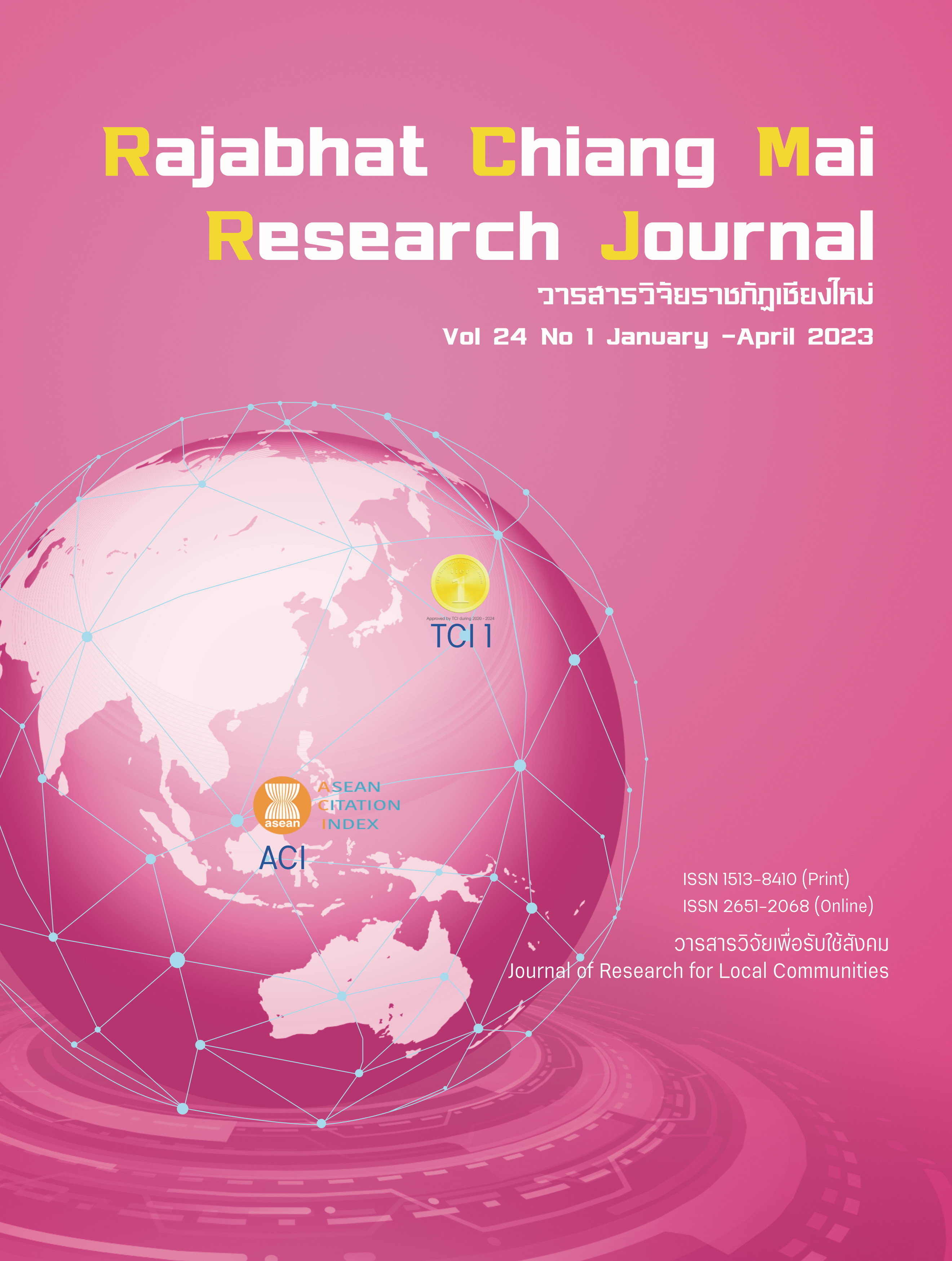Study on Peace-Building in Southeast Asia from the Perspective of Normative Localization —— Based on the Comparison Between Myanmar and Cambodia
DOI:
https://doi.org/10.57260/rcmrj.2023.262025Keywords:
Myanmar, Cambodia, peace-building, Southeast Asia, Normative localizationAbstract
This paper attempts to take Myanmar and Cambodia as examples to explore the consequences of constructive interaction between the international community and Southeast Asian countries after the cold war. After the end of the Cold War, Southeast Asia encountered two regional conflicts and crises of global concern. We finds that for Myanmar and Cambodia, the ability of political elites is the key to leading regional and global peace. The ability of political elites not only determines the process of external norms, but also affects the changes of regional norms. As far as Cambodia is concerned, through cooperation with the United Nations and ASEAN, it has rapidly rebuilt its political authority and effectively internalized the international community's peacebuilding norms. Therefore, Cambodia can improve its national capacity and stability after the emergence of political authority. As far as Myanmar is concerned, after the end of the cold war, the political authority still exists in Myanmar, thus maintaining a certain degree of national stability. With the outbreak of the Rohingya crisis in Myanmar in 2015, Myanmar's original national construction gradually began to collapse. On the one hand, Myanmar cannot internalize the international community's peacebuilding norms. On the other hand, due to the decline of political authority, various internal forces began to struggle with each other, which ultimately led to the failure of the country. For the dissemination of international norms, whether in Cambodia or Myanmar, the localization of external norms requires the cooperation of the political authorities to effectively prevent conflicts.
Downloads
References
Acharya, A. (1995). A regional security community in Southeast Asia?. Journal of Strategic Studies, 18(3), 175-200. DOI: 10.1080/01402399508437610
Acharya, A. (2009). Whose Ideas Matter?: Agency and Power in Asian Regionalism. New York: Cornell University Press.
Askandar, K. (2005). A regional perspective of UN peace operations in Southeast Asia. International Peacekeeping, 12(1), 34-48. DOI: 10.1080/1353331042000286540
BBC News. (20 August 2012). Burma abolishes media censorship. https://www.bbc.com/news/world-asia-19315806
Boege, V., Brown, A., Clements, K.P., & Nolan, A. (2009). Building Peace and Political Community in Hybrid Political Orders. International Peacekeeping, 16(5), 599 - 615. https://doi.org/10.1080/13533310903303248
Boonpunth, K., & Saheem, N. (2022). Roles of civil society in peacebuilding in Southeast Asia: the case studies of Mindanao, Aceh, and Southernmost Thailand. Asian Affairs: An American Review, 49(2), 88-112. DOI: 10.1080/00927678.2022.2089522
Buzan, B., & Segal, G. (1994). Rethinking East Asian Security. Survival, 36(2), 3-21, DOI: 10.1080/00396339408442734
Chanboreth, E., & Hach, S. (29 December 2008). Aid Effectiveness in Cambodia. The Brookings Institution. https://www.brookings.edu/wp-content/uploads/2016/06/12_cambodia_aid_chanboreth.pdf
Curle, A. (1994). New Challenges for Citizen Peacemaking. Medicine and War, 10(2), 96–105. http://www.jstor.org/stable/45354499
Debiel, T., Held, T., & Schneckener, U. (Eds.). (2016). Peacebuilding in Crisis: Rethinking Paradigms and Practices of Transnational Cooperation (1st ed.). Routledge: London: https://doi.org/10.4324/9781315717852
Du, J. (2008). Dissemination of International Norms: Socialization and Localization. (Doctoral Dissertation, Shanghai Jiaotong University).
Finnemore, M. (1996). National Interests in International Society. New York: Cornell University Press.
Fuller, T. (2013). Rally Draws a Diverse Group of Protesters in Cambodia. New York Times. https://www.nytimes.com/2013/12/30/world/asia/antigovernment-march-draws-broad-coalition-of-protesters-in-cambodia.html
Ginty, R. M. (2011). International peace-building and Local Resistance: Rethinking Peace and Conflict. London: Palgrave Macmillan.
Heininger, J. E. (1994). Peacekeeping in transition: the United Nations in Cambodia. New York: Twentieth Century Fund Press.
Huang, W., Gu, C., & Lin, W. (2020). Political and Economic Changes in Cambodia (1953-2018). Taipei: LianJing Press.
Hughes, C. (2009). Dependent Communities: Aid and Politics in Cambodia and East Timor. New York: Cornell University Press. https://www.brookings.edu/wp-content/uploads/2016/06/12_cambodia_aid_chanbor eth.pdf
International Labour Organization. (2021). ILO estimates Reveal Heavy Job Losses in the First Half of 2021 in Myanmar. https://www.ilo.org/global/about-the-ilo/newsroom/news/WCMS_814686/lang--e n/index.htm
Jitpiromsri, S., Haque, M. & Chambers, P. (2021). Peace-building in Thailand’s Deep South and Myanmar/Burma: the dynamic roles of Muslim minorities in conflict societies. Asian Affairs: An American Review, 48(1), 85-110. DOI: 10.1080/00927678.2020.1843216
Khemara, S. (2014). Cambodian Opposition Criticizes Dependence on China Aid Money. Voice of America. https://www.voanews.com/a/cambodian-opposition-criticizes-dependence-on-china-aid-money/2527010.html
Kobayashi, K., & Herbert. M. (2021). Rethinking business reforms in post-conflict settings: the case of Sierra Leone. Conflict, Security & Development, 21(4), 1-19. 10.1080/14678802.2021.1888501
Kramer, T. (2011). Civil Society Gaining Ground, Opportunities for Change and Development in Burma. Amsterdam: Transnational Institute. https://www.tni.org/en/publication/civil-society-gaining-ground
Kramer, T. (2018). From War to Peace in Kayah (Karenni) State: A Land at the Crossroads in Myanmar. Amsterdam: Transnational Institute. https://www.tni.org/files/publication-downloads/tni-2018_karenni_eng_web_def.pdf
Lee, S.Y., & Park, W. B. (2020). The dual track of democracy promotion in post-war peace-building in Cambodia: the gap between institutional development and civil society mobilization. Peace-building, 8(1), 78-97. DOI: 10.1080/21647259.2018.1498671
Ledgerwood, J., & Un, K. (2003). Global concepts and local meaning: human rights and Buddhism in Cambodia. Journal of Human Rights, 2(4), 531-549. DOI: 10.1080/1475483032000137129
Liu, X. (2009). Domestic System Reform under the Influence of International Norms. (Doctoral Dissertation, Nankai university).
Li, Y., Zhu, Z., & Zheng, A. (2022). Research on the Interaction between China and Global Health Norms in the 21st century: a Security Perspective. Macau Academic Journal, 3(1), 18-38.
Lopes, C., & Theisohn, T. (2003). Ownership, leadership, and transformation: Can we do better for capacity building? London: Routledge.
National Democratic Institute. (1996). Public Attitudes Toward Democracy in Cambodia: A Focus Group Study. Retrive from https://www.ndi.org/node/22201
Öjendal, J., & Ou, S. (2013). From friction to hybridity in Cambodia: 20 years of unfinished peacebuilding. Peacebuilding, 1(3), 365-380, DOI: 10.1080/21647259.2013.813178
Owen, J. (2010). Listening to the rice grow: the local-expat interface in Lao-based international NGOs. Development in Practice, 20(1), 99-112. DOI: 10.1080/09614520903436968
Peou, S. (2000). Intervention & Change in Cambodia: Towards democracy? (Vol. 8). New York: St. Martin's Press. Singapore: Institute of Southeast Asian Studies.
Pouligny, B. (2005). Civil Society and Post-Conflict Peace-building: Ambiguities of International Programmes Aimed at Building “New” Societies. Security Dialogue, 36(4), 495-510. https://doi.org/10.1177/0967010605060448
Roy, B. (2020). Critical realism and the ontology of persons. Journal of Critical Realism, 19(2), 113-120. DOI: 10.1080/14767430.2020.1734736
Sekiguchi, M., & Hatsukano, N. (2013). Land conflicts and land registration in Cambodia. In Land and Post‐conflict Peacebuilding, ed. J. Unruh and R.C. Williams. London: Earthscan. Retrive from http://environmentalpeacebuilding.org/assets/Documents/LibraryItem-000-Doc-165. pdf
Simangan, D. (2018). When hybridity breeds contempt: negative hybrid peace in Cambodia. Third World Quarterly, 39(8), 1525-1542. DOI: 10.1080/01436597.2018.1438184
Simangan, D. (2017). The pitfalls of local involvement: justice and reconciliation in Cambodia. Kosovo and Timor-Leste, Peacebuilding, 5(3), 305-319, DOI: 10.1080/21647259.2016.1273489
Shinoda, H. (2008). The difficulty and importance of local ownership and capacity development in peace-building. Hiroshima: Institute for peace Science.
Sochan, R. (2022). Hun Sen Meets with UN Envoy Heyzer on Myanmar. Phnom Penh Post. https://www.phnompenhpost.com/national-politics/hun-sen-meets-un-envoy-heyzer-Myanmar
Sperling, V. (2009). Democracy from Abroad? Political Globalization. In Altered States: The Globalization of Accountability. Cambridge: Cambridge University Press. DOI:10.1017/CBO9780511609824.003
Strangio, S. (2016). Hun Sen’s Cambodia. London: Yale University Press.
Thant, M. U. (2021). The Hidden History of Burma: Race, Capitalism, and the Crisis of Democracy in the 21st Century. Taipei: Macro Poro Press.
The Asia Foundation. (2003). Democracy in Cambodia-2003’. A Survey of the Cambodian Electorate. Retrive from https://www.semanticscholar.org/paper/Democracy-in-Cambodia-2003-%3A-a-survey-of-the-Meisburger/b60b4774f25cd7a598b161a45545b593ae5bddd2
The Asia Foundation. (2014). The Asia Foundation Releases Cambodian Public Opinion Survey. Democracy in Cambodia – 2014: A Survey of the Cambodian Electorate reveals sobering trends. Retrive from https://data.opendevelopmentcambodia.net//dataset/democracy-in-cambodia-2014
The UN Refugee Agency. (2019). More than Half a Million Rohingya Refugees eceive Identity Documents, Most for the First Time. Retrive from https://www.unhcr.org/news/briefing/2019/8/5d4d24cf4/half-million-rohingya-refugees-receive-identity-documents-first-time.html
The European Parliament. (2021). European Parliament Resolution of 7 October 2021 on the Human Rights Situation in Myanmar, Including the Situation of Religious and Ethnic Groups (2021/2905(RSP)). Retrive from https://www.europarl.europa.eu/doceo/document/TA-9-2021-0417_EN.html
TIAdmin. (2012). Attacks and Threats Against Human Rights in Cambodia 2010-2012. The Report issue. http://ticambodia.org/library/ti_resource/attacks-threats-against-human-rights-defenders-in-cambodia-2010-2012/
UN News. (2022). The number of Internally Displaced in Myanmar has doubled to 800,000. Retrive from https://news.un.org/en/story/2022/02/1111812
Var, V. (2016). China’s influence in Cambodia. Khmer Times. Retrive from https://www.khmertimeskh.com/25255/chinas-influence-in-cambodia/
Verkoren, W., & Ngin, C. (2017). Organizing against Land Grabbing in Cambodia: Exploring Missing Links. Development and Change, 48(3), 1336-1361. https://doi.org/10.1111/dech.12346
Weber, M. (1997). The Theory Of Social And Economic Organization. New York: Free Press.
Wendt, A. (1999). Social Theory of International Politics, London: Cambridge University Press.
Wiener, A. (2015). In the Eye of the Beholder: A Sociology of Knowledge Perspective on Norm Transfer. Journal of European Integration, 37(2), 211-228. DOI: 10.1080/07036337.2014.990136
Wu, L. (2019). Neglected Assessment of Norm Diffusion Effect: A Case Study of the Convention on Cyber-crime. World Economics and Politics, 2, 53-77.
Zhang, L. (2020). Mutual Construction of Norm Localization and State Agency: A Case study of Thailand Participation in Public Health. Southeast Studies, 2, 65-80.
Downloads
Published
How to Cite
Issue
Section
License
Copyright (c) 2023 Rajabhat Chiang Mai Research Journal

This work is licensed under a Creative Commons Attribution-NonCommercial-NoDerivatives 4.0 International License.
1. Articles, information, content, images, etc published in the “Community and Social Development Journal” are copyrighted by the Community and Social Development Journal, Chiang Mai Rajabhat University. In order to properly distribute the articles through print and electronic media, the authors still hold the copyright for the published articles under the Creative Commons Attribution (CC BY) license, which allows the re-distribution of the articles in other sources. References must be made to the articles in the journal. The authors are responsible for requesting permission to reproduce copyrighted content from other sources.
2. The content of the articles appearing in the journal is the direct responsibility of the article authors. The editorial board of the journal does not necessarily agree with or share any responsibility.














